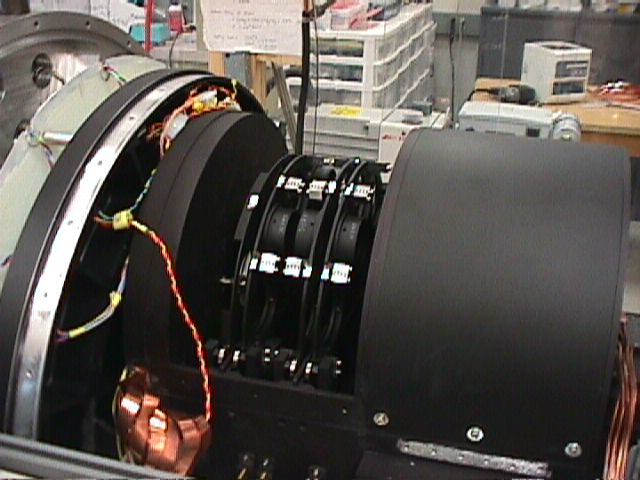Mimir - Overview
|
|
Mimir is a cryogenic, facility-class instrument for conducting wide-field imaging, long-slit spectroscopy, and imaging polarimetry on the Perkins 1.83 m telescope outside Flagstaff, Arizona. Mimir was designed, fabricated, and tested by teams at Boston University and Lowell Observatory with support provided by NASA, NSF, and the W.M. Keck Foundation. Mimir saw first light on August 19, 2004. It is now available to certified Boston University and Lowell Observatory researchers for regular scheduling. Outside visitor access requires certification or collaborative use (see "Users" page). Mimir works over the entire 1 to 5 micron wavelength region. It has newly developed JHKsL'M' broadband filters, H2 S(1) On and Off narrow band filters, three long pass filters to assist spectroscopic observations, and two short pass filters used as blockers for the JHKs bands. For spectroscopy, the user may select one of 13 different slits with up to 5 arcmin slit heights and as low as 0.35 arcsec slit width. Grisms are used to yield spectral resolutions (R) of about 700 at the highest (the JHK grism and LM grism) to about 100 at the lowest (the SED grism). Polarimetry utilizes a cold rotating zero-order half-wave plate in H-band and a fixed wire grid for analysis. The detector is a 1024x1024 InSb Aladdin III hybrid device with 32 parallel readout channels. Read noise has been measured to be 18 electrons per read, with dark current below about 15 electrons per sec per pixel for long exposures, and non-saturated well depths of more than 80,000 electrons. Readout modes currently include a normal (8 microsec per pixel) read of the entire array, subarray readout (at the same pixel speed), and multiple-sampling (Fowler sampling) readouts in both full and subarray modes. Fast readout (high background - L&M) and low-noise (very slow read - primarily for spectroscopy) readout modes will be implemented in the future. Mimir is fully integrated with the Perkins telescope and guider control software (LOIS, Move) and operates under complex scripting encompassing telescope dithering, filter and HWP changing, and image collection. |
{bottom} |












